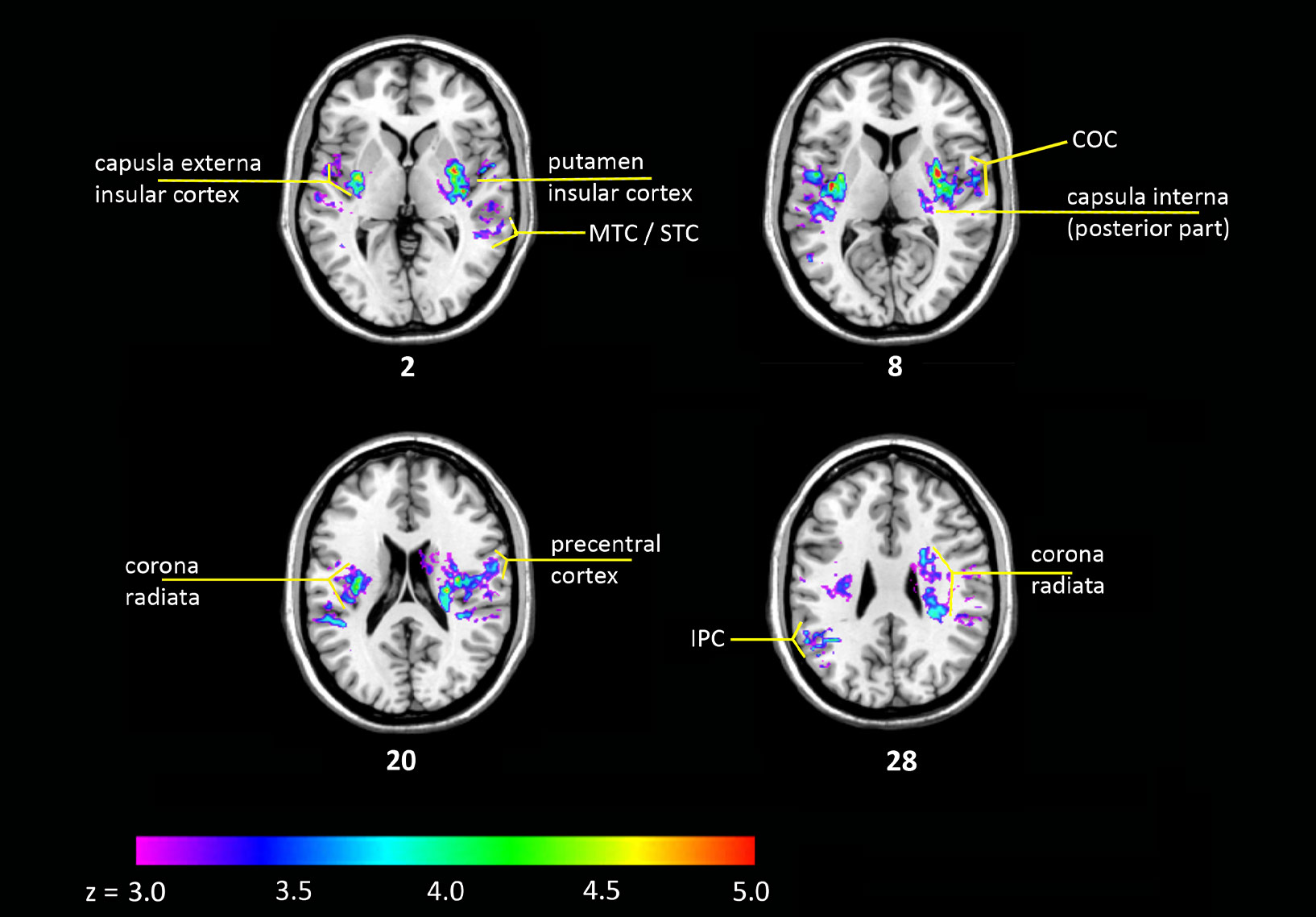Lesion-symptom inference

Lesion-symptom inference is a classical instrument to elucidate the anatomical substrates of brain functions in health and disease. In our group, we apply traditional and modern, innovative approaches of lesion-deficit mapping. We create and consolidate imaging and clinical data bases from large clinical trials in multi-national collaborations such as the WAKE-UP trial. We provided comprehensive anatomical maps of functional outcome scores and sensory deficits after stroke (Cheng et al., 2014; Kessner et al., 2019). In collaboration with our partners, we investigate novel, multivariate models of lesion-deficit mapping to account for the dimensionalities arising both from the brain and lesion architecture using machine learning and mathematical models based on game-theory (Zavaglia et al., 2015).
